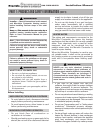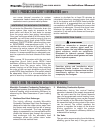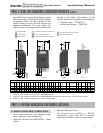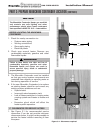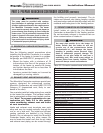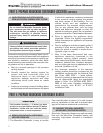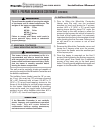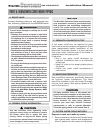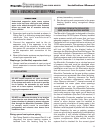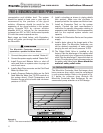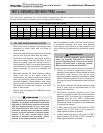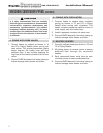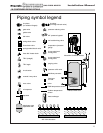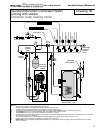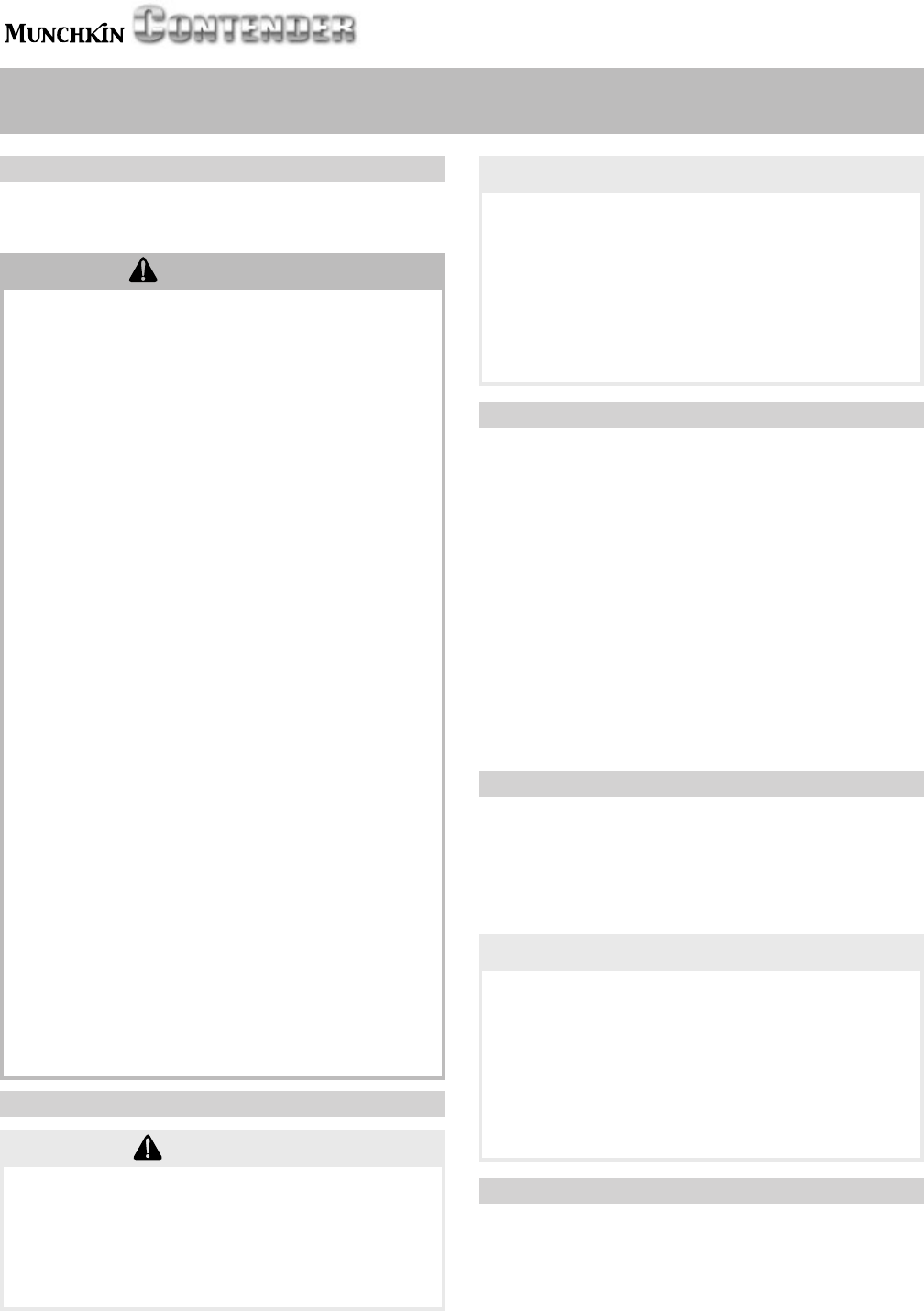
13
GAS-FIRED HEATER Installation Manual
A. RELIEF VALVE
Connect discharge piping to safe disposal loca-
tion, following guidelines in the WARNING below.
B. GENERAL PIPING INFORMATION
C. SEPARATE LOW WATER CUTOFF
A low water cutoff may be required by state
local code or some insurance companies. Check
code requirements before installation of the
Munchkin Contender Heater. It is also required
that a low water cutoff be used if the heater is
installed above the piping level.
If required:
• Use a low water cutoff designed for
hydronic installations that is an electrode
probe type
• Install in a tee on the supply piping above
the heater
• Follow low water cutoff manufacturer’s
instructions
D. BACKFLOW PREVENTER
Use a backflow preventer specifically designed
for hydronic heater installations. This valve
should be installed on the cold water fill supply
line per local codes. (See piping details at the
end of this section.)
E. SYSTEM WATER PIPING METHODS
Expansion tank and make-up water
1. Ensure expansion tank size will handle heater
and system water volume and temperature.
Allow 3 gallons for the heater and its piping.
CAUTION
All piping methods shown in this manual use
primary/secondary connection to the heater loop.
This is to avoid the possibility of noise or actuator
problems in zone valves because of the high-head
heater circulator. For other piping methods,
consult your local Heat Transfer Products
representative or refer to separate Munchkin
Contender piping details in this manual (Part 5).
CAUTION
Use two wrenches when tightening water
piping at heater, using one wrench to prevent
the heater return line or supply line from
turning. Failure to support the heater piping
connections to prevent them from turning could
cause damage to heater components.
NOTICE
The Munchkin Contender Heater control module
uses temperature sensors to provide both high
limit protection and modulating temperature
control. The control module also provides low
water protection by sensing the water pressure
of the heat exchanger. Some codes/jurisdictions
may require additional external controls for high
limit and/or low water cutoff protection.
PART 5: MUNCHKIN CONTENDER PIPING
WARNING
To avoid water damage or scalding due to relief
valve operation:
• Discharge line must be connected to relief valve
outlet and run to a safe place of disposal. Terminate
the discharge line in a manner that will prevent
possibility of severe burns or property damage
should the valve discharge.
• Discharge line must be as short as possible and be
the same size as the valve discharge connection
throughout its entire length.
• Discharge line must pitch downward from the valve
and terminate at least 6” above the floor drain
where any discharge will be clearly visible.
• The discharge line shall terminate plain, not thread-
ed, with a material serviceable for temperatures of
375 °F or greater.
• Do not pipe the discharge to any place where freez-
ing could occur.
• No shutoff valve shall be installed between the re-
lief valve and heater, or in the discharge line. Do not
plug or place any obstruction in the discharge line.
• Test the operation of the valve after filling and pres-
surizing system by lifting the lever. Make sure the
valve discharges freely. If the valve fails to operate
correctly, replace it with a new relief valve.
• For heaters installed with only a pressure relief
valve, the separate storage vessel must have a tem-
perature and pressure relief valve installed. This re-
lief valve shall comply with the standard for Relief
Valves for Hot Water Supply Systems, ANSI
Z21.22 CSA4.4.
• Failure to comply with the above guidelines could
result in failure of the relief valve to operate, re-
sulting in possibility of severe personal injury, death
or substantial property damage.



